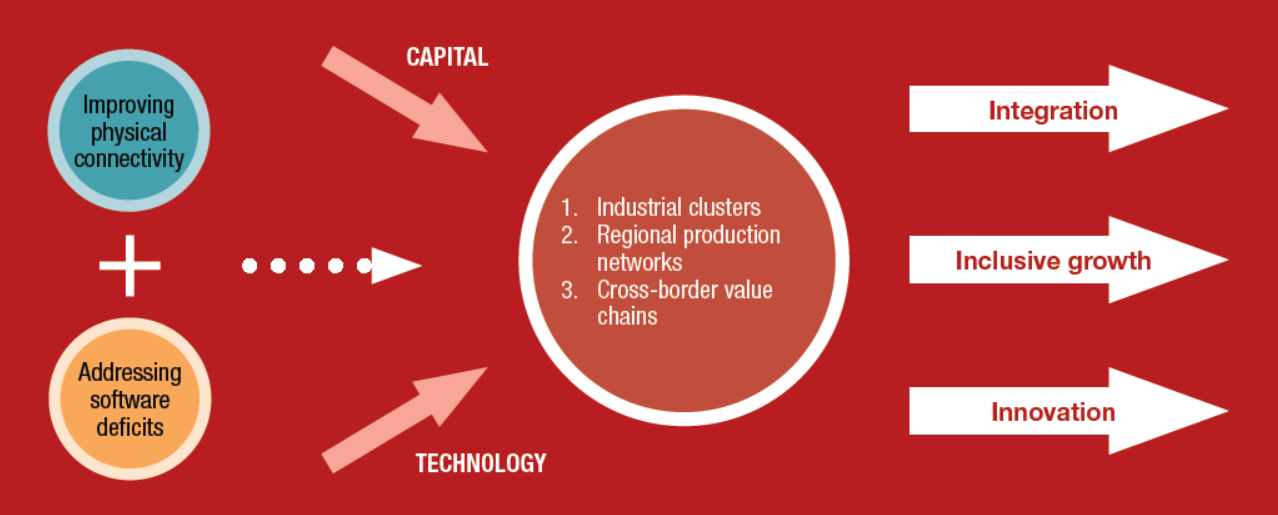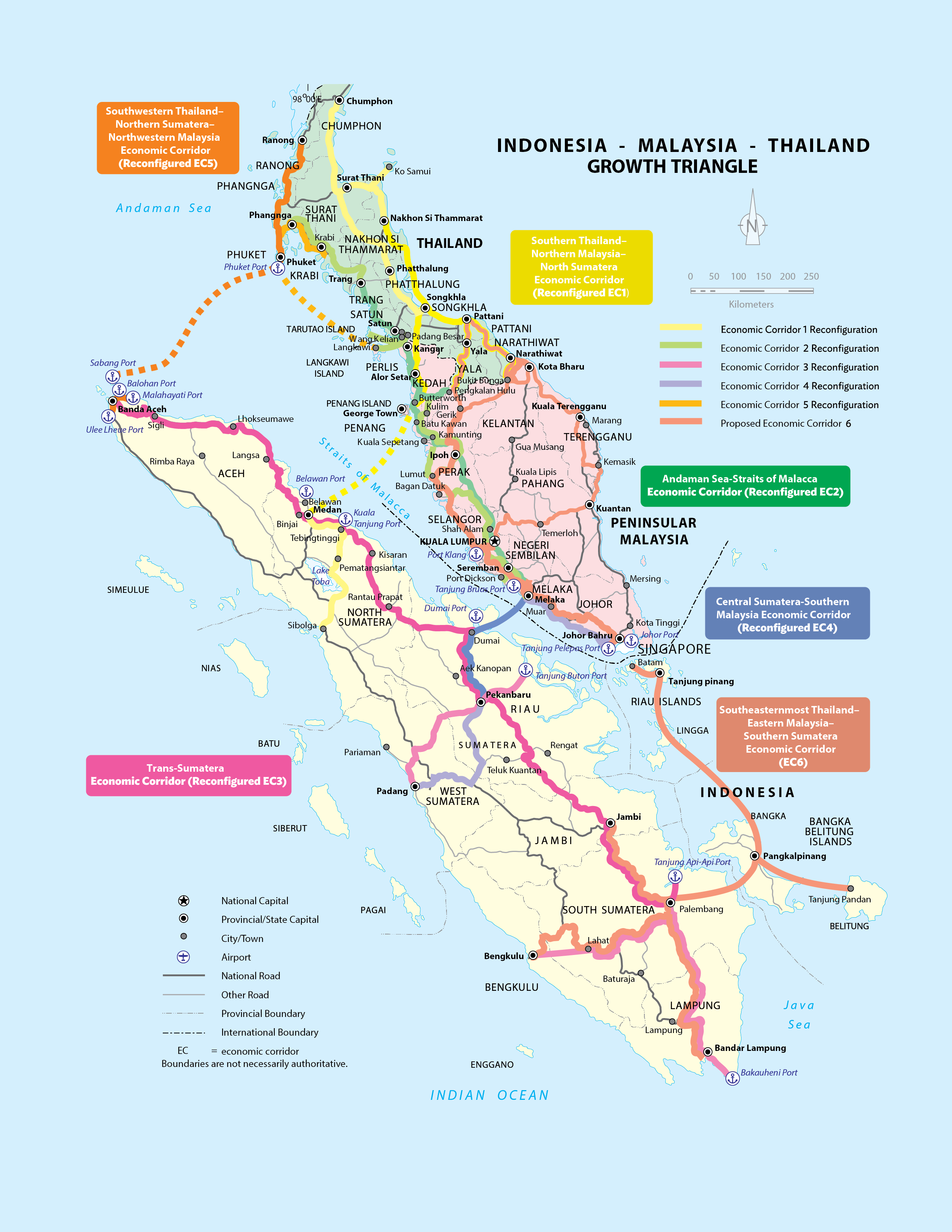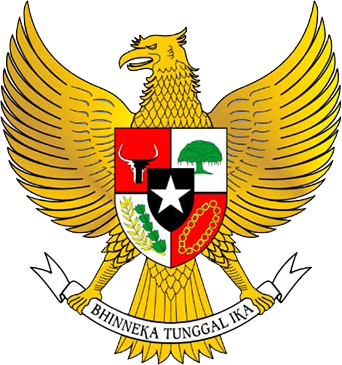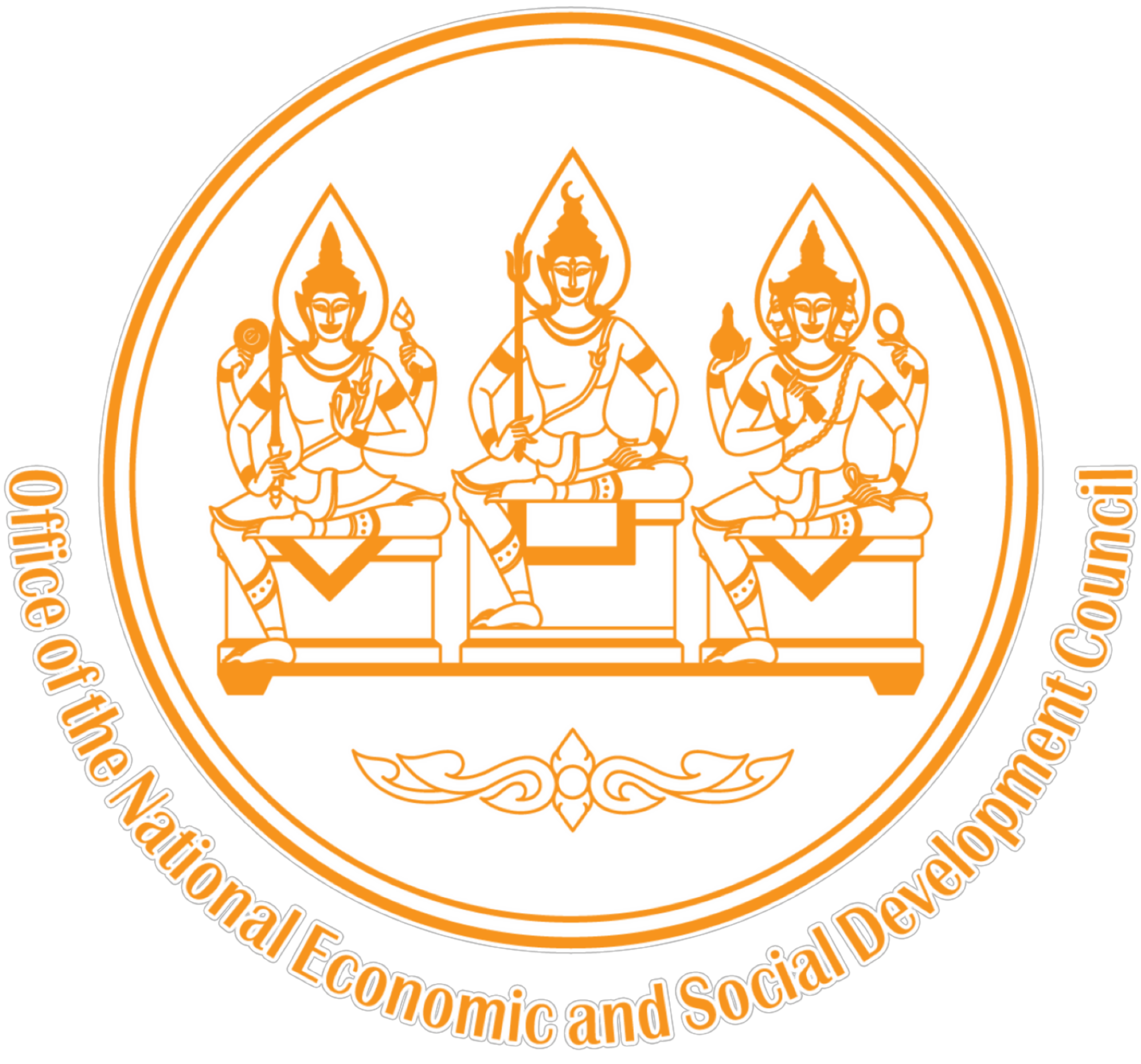Economic Corridor Programmes and Projects
Maximising Economic Network Externalities
There are five priority economic corridors in IMT-GT. Each corridor has its own unique characteristics as defined by its geographic location and comparative advantage. However, what is common among them all is the deliberate policy to enhance connectivity and promote industrial clusters and cross-border production networks along these corridors. This is done with the specific goal of maximising economic network externalities along and beyond the corridors. The IMT-GT’s corridors therefore represent a confluence of regional economic integration and inclusive growth.
In this context, IMT-GT will identify, develop and implement programmes and projects that serve to connect the right economic agents in and outside of the corridors, including the MSMEs and SMEs which are the mainstay of IMT-GT economy both in terms of number of business establishments and employment generation.
EC1
SOUTHERN THAILAND - NORTHERN MALAYSIA - NORTHERN SUMATERA ECONOMIC CORRIDOR
EC2
ANDAMAN SEA - STRAITS OF MELAKA CORRIDOR
EC3
TRANS-SUMATERA ECONOMIC CORRIDOR
EC4
CENTRAL SUMATERA - SOUTHERN MALAYSIA ECONOMIC CORRIDOR
EC5
SOUTHWESTERN THAILAND - NORTHERN SUMATERA - NORTHWESTERN MALAYSIA ECONOMIC CORRIDOR
EC6
SOUTHEASTERNMOST THAILAND - EASTERN MALAYSIA - SOUTHERN SUMATERA ECONOMIC CORRIDOR
Source: Adopted from IMT-GT Implementation Blueprint 2022–2026
Key Corridor Programmes and Projects
IMT-GT will continue to accord high priority to the implementation of programmes and projects that aim at expanding and enhancing the physical connectivity of these corridors, particularly in areas of transport, ICT and power connectivity.
To support infrastructure development, IMT-GT will tap into emerging funding vehicles such as the Asia Bond Fund, the Asian Bond Market Initiative, the ASEAN Infrastructure Fund, and the Asian Infrastructure Investment Bank. IMT-GT will also encourage more private sector investment in infrastructure in the corridors through putting in place robust public private partnership frameworks characterised by clear risk-sharing arrangements and project development. 28 Equal attention will be given to programmes and projects that aim at addressing the software deficits of the corridors as well as programmes and projects that contribute to the service performance and interoperability of the hardware and software of the corridors. Among others, this will include projects to streamline the CIQ rules, regulations and procedures along the corridors.
The next category of corridor programmes and projects are those that contribute to the development of industrial clusters and production networks along the corridors; and expansion, diversification and sophistication of the manufacturing, agribusiness and tourism value chains. This includes projects on developing Special Border Economic Zone (SBEZ), Special Economic Zones (SEZ), as well as projects on enhancing skills and technology infusion. The latter may involve collaborative activities between the governments, businesses, civil societies, universities (e.g., UNINET) and research organisations.
Maximizing Economic Network Externalities Through Corridor Development

Underpinned By Results-Based Monitoring and Evaluation
IMT-GT acknowledges that producing quality outputs is simply not enough. In order to realise Vision 2036, IMT-GT projects must be able to deliver results close to where the intended beneficiaries are located.
To accelerate the strategic shift toward results, IMT-GT will mainstream the results-based monitoring and evaluation system as outlined in the IMT-GT Project Manual. The system will capture the delivery of project outputs, outcomes and impacts. Better decision making will be achieved through focusing systematically on the whole results chain, from inputs to impacts.
Vision 2036 will be reviewed every five years to monitor progress and evaluate outcomes and impacts with a view towards fine-tuning and enhancing the subregional cooperation and integration efforts.





